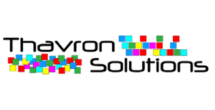It was the topic of discussion at every ITFM/TBM conference last year. We heard it from everyone presenting — your data matters.
This really isn’t a surprise. We all know “garbage in… garbage out” but for a little while people got caught up in marketing hype and thought data magic was possible.
It is also important to note that “perfect” data is a myth. The important thing for success is having data that is “good enough”. These three “Cs” are the things to keep in mind when evaluating your data:
- Consistency. Consistency is especially important if you want to do any automation of data integration. This is an easy thing to check for: month over month are the data extracts in the same format? Are the columns in the same order and do the data formats remain stable. If you want to do year over year budget trending, make sure that your budget extracts use the same formats. If you have had system changes that caused changes in your data formats,many of the tools on the market allow you to change data mappings to accommodate, or even better- leverage your internal ETL team.
- Completeness. This is a measure of how many blanks are in a column of interest. Your target is to have no gaps in critical data fields, but if the data is 80–90% complete, you should start. The visibility of the remaining gaps that will be exposed in your reporting will be a strong motivator to data owners to close the gaps. If you wait until the data cleanup is complete, the pressure to improve will be missing and your progress will be slower in the long run.
- Correctness. This tells you if the data in the system is accurate. Ownership of data accuracy always belongs with the source data owners, but it helps everyone if you have some insights and can speak to this intelligently before everyone starts poking holes in your results. No data owner wants to have imperfect data, but sometimes the problems are hard to uncover. Do you have Orphans in your CMDB? Do you have circular relationships in your CMDB? Are your projects aligned to applications and services in a meaningful way? Only the data owners are going to be able to validate data correctness 100% ( and sometimes even that is a discovery process), but if you can present them with some analytics that make their lives easier, it can be a partnership for a common end goal. No one wants to find out they have old or bad data- given the right analytics on problems and impact, we have never had a data owner who refuses to take action. It is helpful if you can generate the data analytics and visualizations that help them find these buried data issues faster and easier- remember that if this data issue were easy to find and easy to solve, it would not be there today.
ITFM initiatives are playing an important strategic role in many companies today. Use these three Cs to understand your readiness and opportunities for improvement so you can assist your business counterparts in making your company a market leader.
Wanting more guidance on how to assess your data and how to build a path forward? Thavron offers a flat rate service to assess your data maturity.


[…] choose is able to handle the load. This is one of the reasons that Service Costing in Excel fails. Even before you start to build, make sure that the analytics you use to assess data readiness are up…. Without the right algorithm design, discovering circular logic in your CMDB before it blows up […]
[…] Sure if your data is ready for this level of modeling? Check out our post on Data Maturity Assessments , attend this virtual class on data assessments, or talk to us about our maturity assessment […]